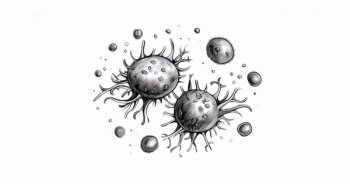
AI's Role in Differentiating MDS and Pre-MDS at ASH 2024
Palak Dave discusses the diagnostic challenges between myelodysplastic syndrome and pre-MDS conditions.
Palak Dave, a postdoctoral fellow at Moffitt Cancer Center and Research Institute, discusses the diagnostic challenges between myelodysplastic syndrome (MDS) and pre-MDS conditions, such as idiopathic cytopenia of undetermined significance (ICUS) and clonal cytopenia of undetermined significance (CCUS).
While pre-MDS conditions exhibit abnormalities similar to MDS, their severity is not as pronounced. The manual diagnosis of these conditions is often hindered by subjectivity, leading to variability in how patients are categorized. This inconsistency can result in different classifications for similar cases, making the diagnosis challenging and unreliable.
In response, Dave presents a study to be discussed at the 2024 American Society of Hematology (ASH) Annual Meeting and Exposition. The research explores the use of artificial intelligence (AI) to standardize and accelerate the diagnosis of MDS and pre-MDS conditions.
The AI approach employs deep learning to distinguish MDS from pre-MDS by analyzing bone marrow aspirate smear images alone, without relying on additional clinical data, genetic tests, or other inputs. The study aims to evaluate how effectively this method can differentiate between the conditions based solely on pathology images, potentially leading to more consistent and accurate diagnoses. This innovative use of AI could improve the diagnostic process and help clinicians make more reliable decisions for patients.
Transcription:
0:10 | The main difference between MDS and pre-MDS conditions lies in the threshold of abnormalities. In pre-MDS conditions, such as ICUS and CCUS, they do have abnormalities similar to MDS, but not as high as MDS. When they analyze these things manually, there are challenges, [particularly due to] subjectivity. This subjectivity can result in variability, potentially causing a patient to be categorized differently. To address this, we are working to standardize the process to ensure more consistent and reliable classification.
0:50 | It is a deep learning approach designed to automatically distinguish MDS from pre-MDS conditions using only bone marrow aspirate smear images. No additional clinical data, genetic testing, or other inputs are involved—just image data. The goal is to explore how accurately this method can perform using only pathology images.










































